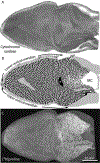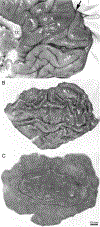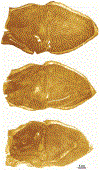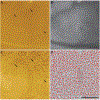Ocular dominance columns: enigmas and challenges
- PMID: 19218231
- PMCID: PMC6913877
- DOI: 10.1177/1073858408327806
Ocular dominance columns: enigmas and challenges
Abstract
In some mammalian species, geniculocortical afferents serving each eye are segregated in layer 4C of striate cortex into stripes called ocular dominance columns. Having described the complete pattern of ocular dominance columns in the human brain, the authors enumerate here the principal enigmas that confront future investigators. Probably the overarching challenge is to explain the function, if any, of ocular dominance columns and why they are present in some species and not others. A satisfactory solution must account for the enormous natural variation, even within the same species, among individuals in column expression, pattern, periodicity, and alignment with other components of the functional architecture. Another major priority is to explain the development of ocular dominance columns. It has been established clearly that they form without visual experience, but the innate signals that guide their segregation and maturation are unknown. Experiments addressing the role of spontaneous retinal activity have yielded contradictory data. These studies must be reconciled, to pave the way for new insights into how columnar structure is generated in the cerebral cortex.
Figures














References
-
- Adams DL, Horton JC. 2003a. Capricious expression of cortical columns in the primate brain. Nat Neurosci 6:113–14. - PubMed
-
- Adams DL, Horton JC. 2006a. Monocular cells without ocular dominance columns. J Neurophysiol 96:2253–64. - PubMed
-
- Adams DL, Horton JC. 2006b. Ocular dominance columns in strabismus. Vis Neurosci 23:795–805. - PubMed
Publication types
MeSH terms
Grants and funding
LinkOut - more resources
Full Text Sources

